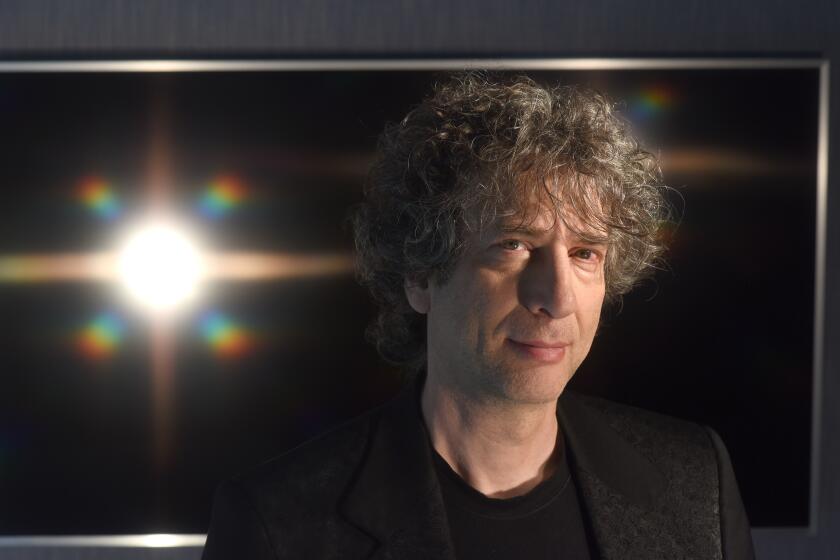Ben Lerner considers the hatred of poetry; Marie Ponsot celebrates its joys
- Share via
Although Ben Lerner’s latest book is titled “The Hatred of Poetry,” I am almost certain that poetry is less hated now than it has ever been. I don’t think the readers who would be drawn to this book — poetry fans with their dukes up — actually need it at all. And an actual hater of poetry wouldn’t get past the first page.
Lerner, 37, is one of my generation’s most brilliant literary minds, author of three books of poems and two novels, including “10:04.” In this slight book, Lerner makes a curious case for poetry, presupposing that it is an art that “assumes the dislike of its audience.” His goal, thankfully is to show how that “dislike” can ultimately “come to resemble love,” but he takes an oddly contrary path to that conclusion.
Lerner’s argument is founded upon his assertion that “the poet is a tragic figure. The poem is always a record of failure.” He means that poems strive toward the ideal, toward a better or worse or at least explainable world that they can never realize.
He begins with Marianne Moore’s three-line poem “Poetry,” which famously begins, “I, too, dislike it” and ends claiming, at its best, poetry makes “a place for the genuine.” He revels in Moore’s dislike, but already I take issue. I’d argue that that “place” the poem clears — a space in which poet and reader can inhabit the distance between the actual and the ideal — is poetry; the thrilling feeling of straddling that chasm, of describing the wished-for world in the language of the banal everyday, is what readers come to poetry for, and, more important, I’d wager most poetry readers know that going in. Lerner says “poetry and the hatred of poetry are for me — and maybe for you — inextricable,” but I don’t think they are.
Perhaps the problem is the sensationalizing word “hatred.” A more accurate and believable word for what I think Lerner is getting at, and what I do believe this book demonstrates, is “ambivalence,” meaning opposing and passionate emotions experienced simultaneously. That word describes a very natural response to poetry — the sense that one is held at bay and invited in by a poem’s ostensible mysteries.
Lerner takes us on a tour of various historical and contemporary cases for and against poetry — from a probable misreading of Plato through a wonderful glossing of the mystic, poet and critic Allan Grossman; to Whitman, Keats and Dickinson; self-identified members of the poetic avant-garde; contemporary critics proclaiming poetry is dead; and Claudia Rankine, among a few contemporary poets demonstrating it’s not. There are absolutely delicious moments, such as his takedown of William Topaz McGonagall, “whose ‘The Tay Bridge Disaster,’” Lerner points out, “is considered one of the most thoroughly horrible poems ever composed.” Lerner is often very funny as a critic, and whether or not one agrees, this book is a pleasure to read.
Poetry is read by a larger number of people than ever before, if only because it is written by more people than ever before, due in large part to the proliferation of MFA programs training hundreds of new poets a year, who are also readers of poetry — the very readers who are the likely audience for this book.
“The Hatred of Poetry” may represent Lerner’s own uneasy coming to terms with his ambivalence around his art form, but it tells me very little about mine, and, I’d bet, that of most poetry lovers. As for the haters, I don’t believe in them — no one hates poetry, though many people are indifferent to it, and this book won’t change that.
On the other side of the love-for-poetry spectrum is Marie Ponsot, whose “Collected Poems” is a treasure trove. Ponsot, who is 95, published her first book in 1956, raised seven children as a single parent, published almost nothing for decades, then returned to the poetry scene in the 1980s.
Emily Dickinson, with her concision, trickiness and sense of mischief, is a visible source for Ponsot’s many short, lyric poems, as is Shakespeare: the title of “Admit Impediment,” Ponsot’s 1981 return to poetry, is drawn from the Bard’s Sonnet 116 (“Let me not to the marriage of true minds/ Admit impediments”). Ponsot was a contemporary of the Beats — Lawrence Ferlinghetti, who published Ponsot’s first book early in the seminal City Lights Pocket Poets series, is her only living peer and a friend with whom she exchanged early poems — though she was never like them stylistically, highly ordered where they were improvisatory. Her work sits much more comfortably alongside other now-departed contemporaries: Ponsot’s longer poems resemble — formally, at least — the extended meditative sequences of Adrienne Rich and Muriel Rukeyser. But Ponsot always keeps her politics close to her chest. Ponsot is a personal, esoteric poet, like no one but herself.
“About My Birthday,” from “Admit Impediment,” is perhaps typical of Ponsot’s short lyrics. Here it is:
I’d like to assume,
from my April birthday,
I quickened the womb
on the 4th of July.
If you suffered as I
a sternly fought tendency
to endless dependency
you’d know why.
Ponsot favors long, looping sentences, clauses leaning gently on one another, which drop the reader midway into an elliptical train of thought. There’s a bit of a Dickinsonian riddle here, probing how the circumstances of one’s birth might bear on one’s adult personality. But the real fun of this poem isn’t in the subject matter but in how she manages and subverts the demands of form. The first stanza’s ABAB rhyme pattern lets us think we’re entering a slow-moving, measured little poem, but Ponsot inverts the pattern in the second stanza: note that the first and last lines rhyme, as do the middle two, quickening the speed of our reading and dramatizing that “dependency” by making the middle two lines feel sonically so close together. From the first poems in this book, it’s obvious we’re in the hands of a virtuoso who takes true and simple joy in playing with language.
Ponsot is masterful with received forms — there are sonnets, sestinas and villanelles that are nothing short of gymnastic in their execution. One extraordinary sestina — a complex form requiring the repetition of six words according to a rigid structure — addresses past lovers with whom lost parts of the past were left: “What I miss is not you (as you do, now?)/ But the girl I gave you. Did she do well,/ That stern young person planning to be good.” Ponsot is never working in form for the sake of impressing us but because mandated repetitions, complex rhyme schemes and obscure rules push her wit toward insight, and because form often reveals the truth about our repetitive, questioning and ordering minds.
A very full lifetime’s worth of experiences are recorded and re-envisioned in this poem: marriage, motherhood and divorce are dealt with many times. So are being an artist’s model (“Modeling, you’re an itch the artist/ Doesn’t want to scratch, at least/ Not directly, and not yet”); aging (“Mere failure to be young is not interesting”); and the sensation of passage of time, a frequent subject, how the past appears from what she calls in that same sestina, “the always present tense of thought.”
“Collected Poems” offers Ponsot’s life’s work, including some excellent new poems, and should cement her place as a major figure. The new poems prove Ponsot is still going strong in this “cosmic ride, ours.” If readers have any lingering doubts about how and why to love poetry, this book will lay them to rest.
Teicher is a poet and critic and also the editor of “Once and for All: The Best of Delmore Schwartz.”
::
Ben Lerner
Farrar, Straus and Giroux: 96 pp., $12 paper
::
Marie Ponsot
Knopf: 496 pp., $35
More to Read
Sign up for our Book Club newsletter
Get the latest news, events and more from the Los Angeles Times Book Club, and help us get L.A. reading and talking.
You may occasionally receive promotional content from the Los Angeles Times.






